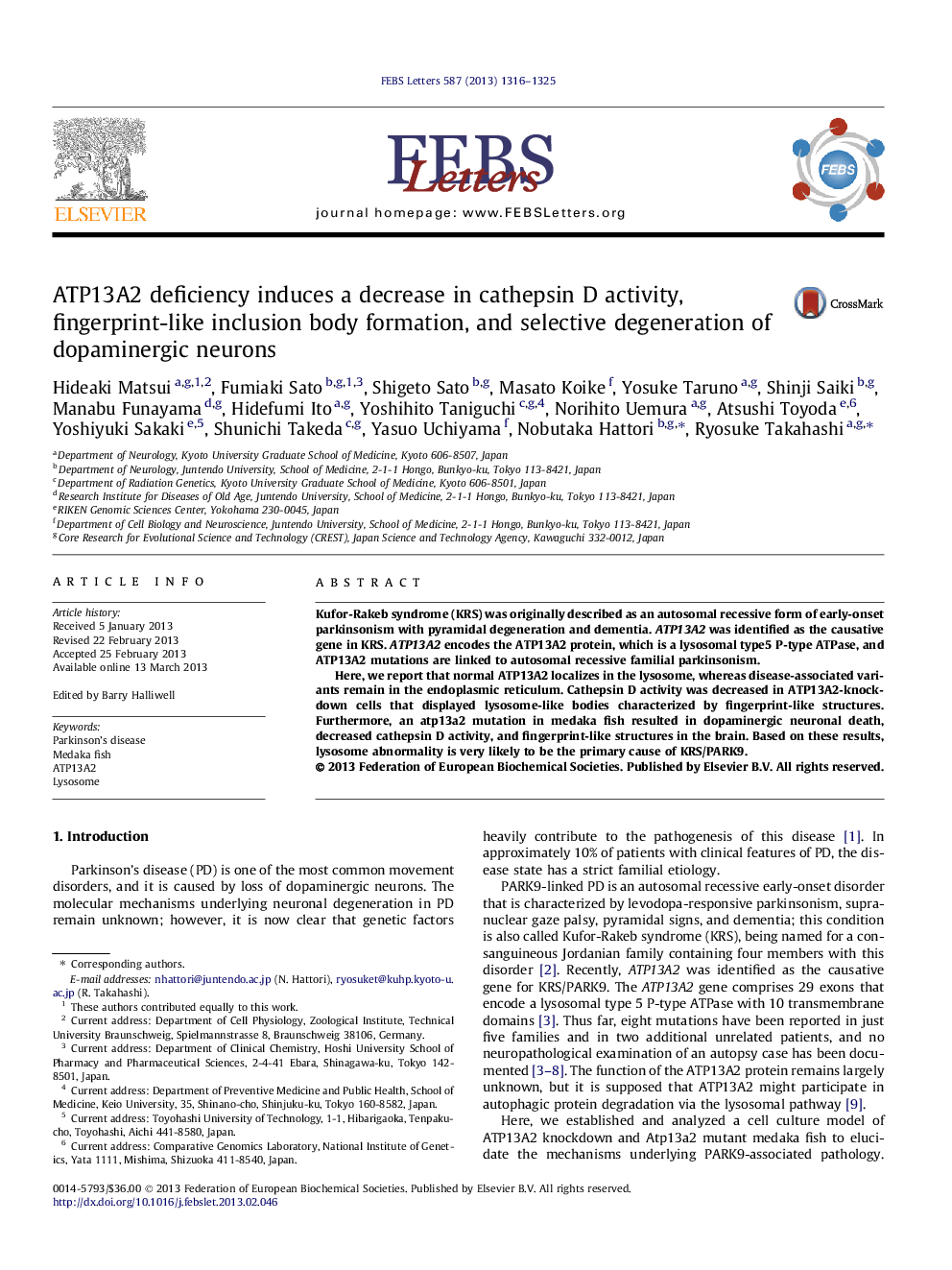| کد مقاله | کد نشریه | سال انتشار | مقاله انگلیسی | نسخه تمام متن |
|---|---|---|---|---|
| 2048037 | 1074056 | 2013 | 10 صفحه PDF | دانلود رایگان |

Kufor-Rakeb syndrome (KRS) was originally described as an autosomal recessive form of early-onset parkinsonism with pyramidal degeneration and dementia. ATP13A2 was identified as the causative gene in KRS. ATP13A2 encodes the ATP13A2 protein, which is a lysosomal type5 P-type ATPase, and ATP13A2 mutations are linked to autosomal recessive familial parkinsonism.Here, we report that normal ATP13A2 localizes in the lysosome, whereas disease-associated variants remain in the endoplasmic reticulum. Cathepsin D activity was decreased in ATP13A2-knockdown cells that displayed lysosome-like bodies characterized by fingerprint-like structures. Furthermore, an atp13a2 mutation in medaka fish resulted in dopaminergic neuronal death, decreased cathepsin D activity, and fingerprint-like structures in the brain. Based on these results, lysosome abnormality is very likely to be the primary cause of KRS/PARK9.
• ATP13A2 is a lysosomal protein but some disease-associated variants remain in the endoplasmic reticulum.
• Loss of ATP13A2 function in cells results in cell death, cathepsin D reduction and fingerprint-like structures.
• Atp13a2 mutant medaka discloses dopaminergic cell death, cathepsin D reduction and fingerprint-like structures.
Journal: FEBS Letters - Volume 587, Issue 9, 2 May 2013, Pages 1316–1325